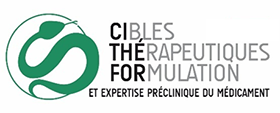Un article intitulé " Metal-chelating activity of soy and pea protein hydrolysates obtained after different enzymatic treatments from protein isolates " vient de paraître dans " Food Chemistry "
Auteurs : Sarah El Hajj, Rachel Irankunda, Jairo Andrés Camaño Echavarría, Philippe Arnoux, Cédric Paris, Loic Stefan, Caroline Gaucher, Sandrine Boschi-Muller, Laetitia Canabady-Rochelle
Food Chemistry, Volume 405, Part A, 134788. https://doi.org/10.1016/j.foodchem.2022.134788
Abstract
Soy and pea proteins are two rich sources of essential amino acids. The hydrolysis of these proteins reveals functional and bioactive properties of the produced small peptide mixtures. In our study, we employed the hydrolysis of soy and pea protein isolates with the endopeptidases Alcalase® and Protamex®, used alone or followed by the exopeptidase Flavourzyme®. The sequential enzyme treatments were the most efficient regarding the degree of hydrolysis. Then, soy and pea protein hydrolysates (SPHs and PPHs, respectively) were ultrafiltrated in order to select peptides of molecular weight ≤ 1 kDa. Whatever the protein source or the hydrolysis treatment, the hydrolysates showed similar molecular weight distributions and amino acid compositions. In addition, all the ultrafiltrated hydrolysates possess metal-chelating activities, as determined by UV-spectrophotometry and Surface Plasmon Resonance (SPR). However, the SPR data revealed better chelating affinities in SPHs and PPHs when produced by sequential enzymatic treatment.

